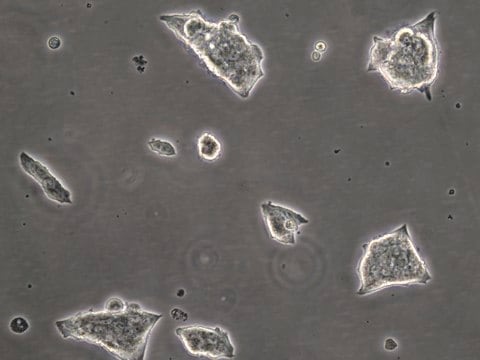G2879
Glycine hydrochloride
≥99% (HPLC)
Sinônimo(s):
Aminoacetic acid hydrochloride, Glycine HCl, Glycocoll hydrochloride, Aminoacetic acid, Aminoethanoic acid, Glycocoll
About This Item
Produtos recomendados
Ensaio
≥99% (HPLC)
forma
powder
peso molecular
111.53
condição de armazenamento
(Tightly closed Dry)
concentração
≤100%
técnica(s)
immunohistochemistry: suitable
pf
176-180 °C (lit.)
solubilidade
water: 0.5 g/mL, clear, colorless
temperatura de armazenamento
room temp
cadeia de caracteres SMILES
Cl.NCC(O)=O
InChI
1S/C2H5NO2.ClH/c3-1-2(4)5;/h1,3H2,(H,4,5);1H
chave InChI
IVLXQGJVBGMLRR-UHFFFAOYSA-N
Procurando produtos similares? Visita Guia de comparação de produtos
Descrição geral
Aplicação
- in the preparation of glycine-HCl buffer
- to elute serum immunoglobulins (IgGs) from the beads in order to check for the complete enrichment of core- and site-specific antibodies
- to regenerate the sensor to elute the bound C-reactive protein (CRP)
Ações bioquímicas/fisiológicas
produto relacionado
Palavra indicadora
Danger
Frases de perigo
Declarações de precaução
Classificações de perigo
Eye Dam. 1 - Skin Corr. 1
Código de classe de armazenamento
8A - Combustible corrosive hazardous materials
Classe de risco de água (WGK)
WGK 1
Ponto de fulgor (°F)
Not applicable
Ponto de fulgor (°C)
Not applicable
Equipamento de proteção individual
Eyeshields, Gloves, type N95 (US)
Certificados de análise (COA)
Busque Certificados de análise (COA) digitando o Número do Lote do produto. Os números de lote e remessa podem ser encontrados no rótulo de um produto após a palavra “Lot” ou “Batch”.
Já possui este produto?
Encontre a documentação dos produtos que você adquiriu recentemente na biblioteca de documentos.
Os clientes também visualizaram
Protocolos
This page shows and discusses three protocols for stripping and reprobing a western blot membrane.
Nossa equipe de cientistas tem experiência em todas as áreas de pesquisa, incluindo Life Sciences, ciência de materiais, síntese química, cromatografia, química analítica e muitas outras.
Entre em contato com a assistência técnica









